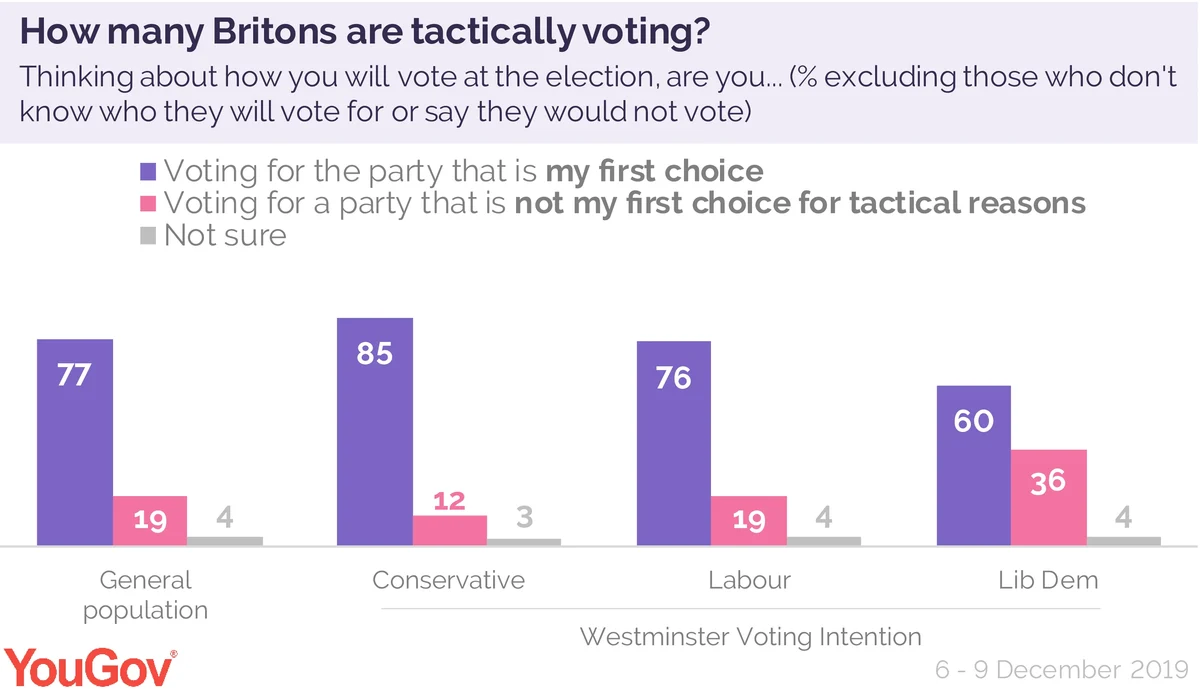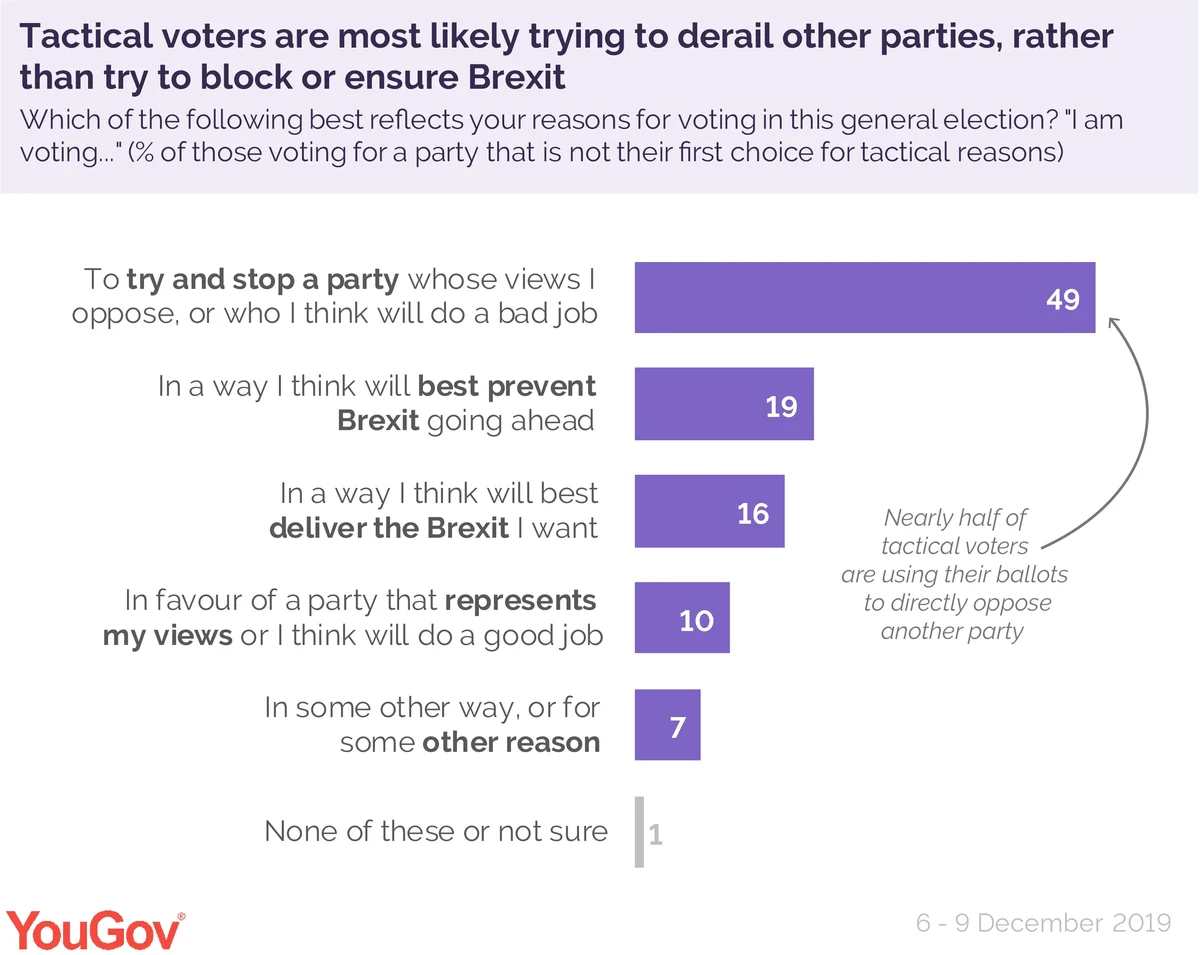Who’s tactically voting, and why? (original) (raw)
One in five voters will use their ballot paper tactically, rather than opting for their first choice
In hotly-contested seats tactical voting (backing a party that isn’t your first choice in order to secure or prevent a certain outcome) can make or break the result. But how many British voters are doing so in this election, and why?
Overall, nearly a fifth voters (19%) currently plan to vote tactically, while 77% will back their first choice party when they head to the polls on Thursday.

Of the main parties, those who would vote Liberal Democrat as their first choice are the most likely to use their ballot tactically, with a third (36%) opting to vote for another party to deliver a wider goal. Nearly one in five (19%) voters who would ideally back the Labour Party also plan on making a tactical vote. Less than a sixth of Conservatives (12%) plan on doing the same.
The main reason for voters opting to tactically vote is to derail an opposing party, as opposed to voting for a party other than their typical first choice party to try and ensure their desired Brexit outcome.

Because of the higher numbers of Lib Democrat and Labour tactical voters, Conservative candidates are likely to take the brunt of tactical voting, with nearly half (49%) of tactical voters saying that they are doing so to oppose another party. This is compared to 19% of tactical voters who are doing so to try and block the UK exit’s from the European Union, and another 16% who are trying to ensure a successful Brexit.
However, it is important not to exaggerate the effects of tactical voting. The data is clear that tactical voters will be making things harder for the Conservatives and therefore the lead they need in order to secure a majority is larger than it would otherwise be. However the latest voting intention data shows the current Tory lead in the polls at around 10 points, and unless the gap closes, it is unlikely that tactical voting will be enough to stop a Tory majority.
Image: Getty